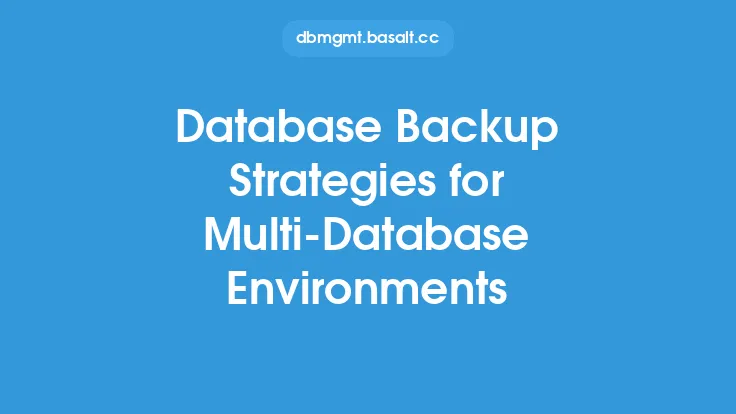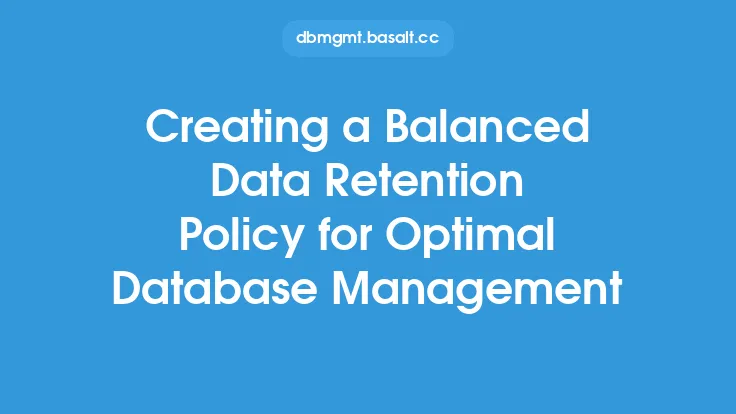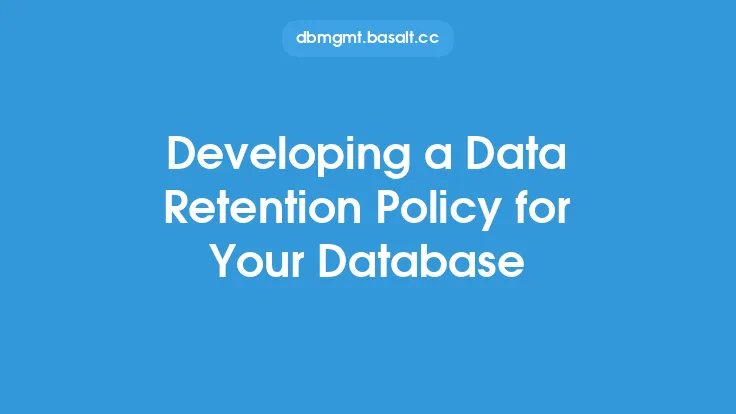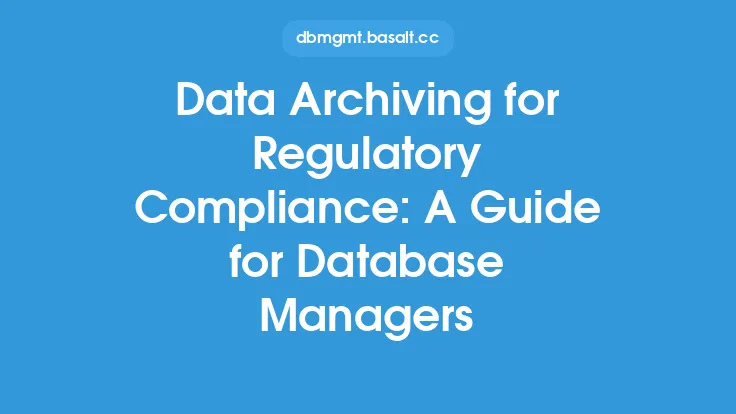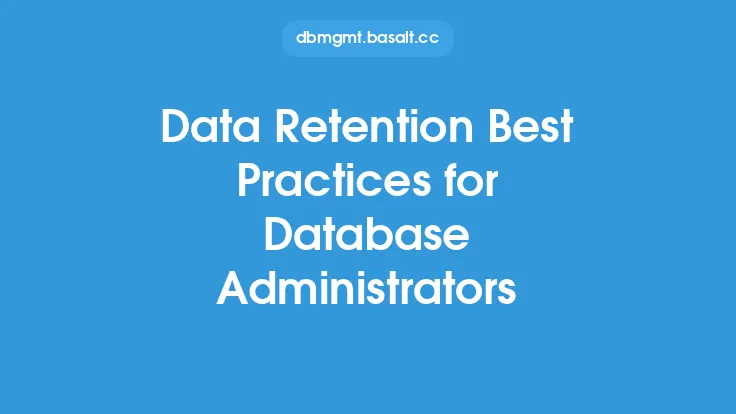When managing multiple databases, implementing a data retention policy can be a complex task. A data retention policy is a set of guidelines that dictate how long data should be kept, how it should be stored, and when it should be deleted. In a multi-database environment, it's essential to consider the unique needs and requirements of each database to ensure that data is properly retained and managed.
Key Considerations for Multi-Database Environments
In a multi-database environment, there are several key considerations to keep in mind when developing a data retention policy. First, it's essential to understand the different types of data that are being stored in each database. This includes transactional data, archival data, and metadata. Each type of data has its own unique retention requirements, and understanding these requirements is crucial for developing an effective data retention policy.
Another critical consideration is the regulatory requirements that apply to each database. Different industries and regions have specific regulations and laws that govern data retention, such as GDPR, HIPAA, and PCI-DSS. Ensuring that the data retention policy complies with these regulations is essential to avoid fines and penalties.
Data Classification and Categorization
Data classification and categorization are critical components of a data retention policy. By classifying and categorizing data, organizations can determine which data is most critical and requires longer retention periods. This can include data that is subject to regulatory requirements, data that is critical to business operations, and data that has historical or archival value.
In a multi-database environment, data classification and categorization can be more complex due to the diversity of data types and sources. However, using a standardized classification system can help to simplify the process and ensure consistency across all databases.
Retention Periods and Schedules
Determining the appropriate retention periods and schedules is a critical aspect of a data retention policy. The retention period refers to the length of time that data is kept, while the schedule refers to the frequency at which data is backed up and stored.
In a multi-database environment, retention periods and schedules may vary depending on the type of data, regulatory requirements, and business needs. For example, transactional data may require shorter retention periods, while archival data may require longer retention periods.
Storage and Management Considerations
Storage and management considerations are also essential when developing a data retention policy for a multi-database environment. This includes determining the storage media, such as disk, tape, or cloud storage, and ensuring that data is properly managed and maintained.
In a multi-database environment, storage and management considerations can be more complex due to the diversity of data types and sources. However, using a standardized storage and management system can help to simplify the process and ensure consistency across all databases.
Data Deletion and Disposal
Data deletion and disposal are critical components of a data retention policy. When data is no longer required, it's essential to ensure that it is properly deleted and disposed of to prevent unauthorized access and minimize the risk of data breaches.
In a multi-database environment, data deletion and disposal can be more complex due to the diversity of data types and sources. However, using a standardized deletion and disposal process can help to simplify the process and ensure consistency across all databases.
Monitoring and Review
Finally, monitoring and review are essential components of a data retention policy. This includes regularly reviewing the policy to ensure that it remains effective and compliant with regulatory requirements, as well as monitoring data storage and management to ensure that it is properly maintained.
In a multi-database environment, monitoring and review can be more complex due to the diversity of data types and sources. However, using a standardized monitoring and review process can help to simplify the process and ensure consistency across all databases.
Best Practices for Implementing a Data Retention Policy
Implementing a data retention policy in a multi-database environment requires careful planning and consideration. Here are some best practices to keep in mind:
- Develop a standardized data retention policy that applies to all databases
- Classify and categorize data to determine retention requirements
- Determine retention periods and schedules based on regulatory requirements and business needs
- Use a standardized storage and management system to ensure consistency across all databases
- Develop a standardized deletion and disposal process to ensure that data is properly deleted and disposed of
- Regularly review and monitor the data retention policy to ensure that it remains effective and compliant with regulatory requirements.
By following these best practices, organizations can ensure that their data retention policy is effective, compliant, and aligned with their business needs. This can help to minimize the risk of data breaches, ensure regulatory compliance, and optimize data storage and management.
